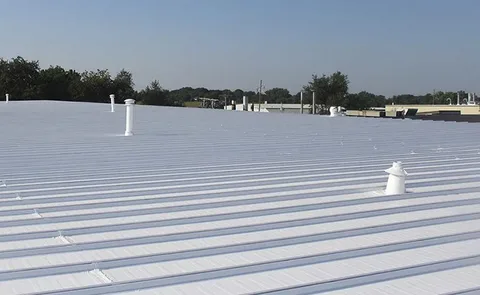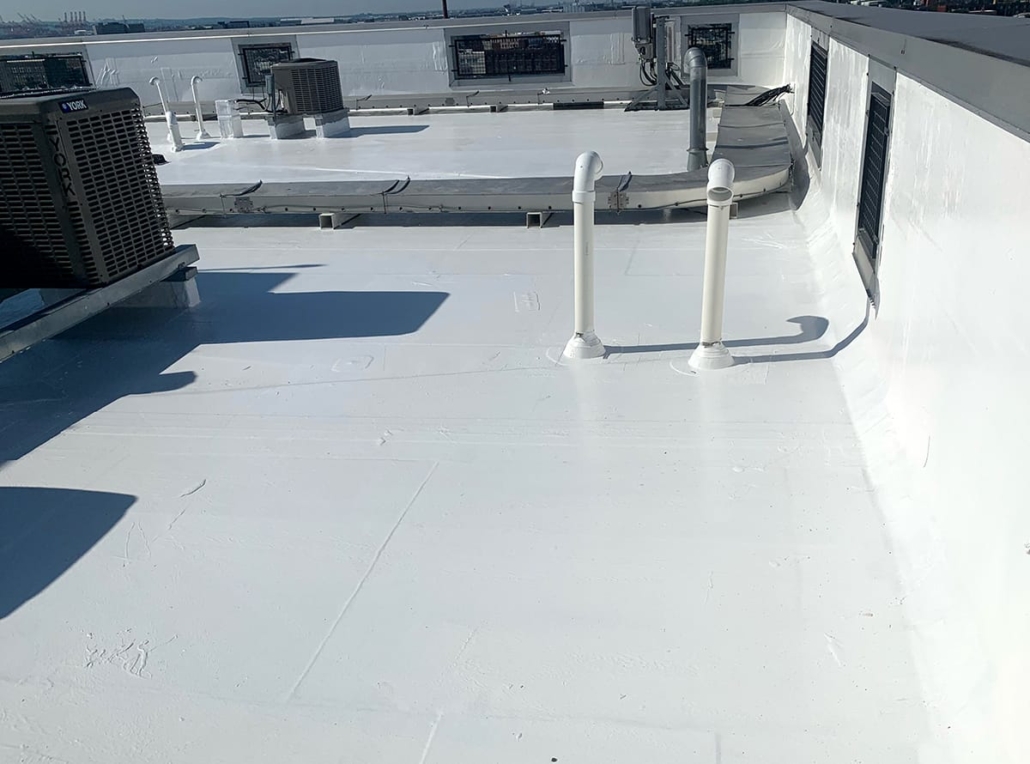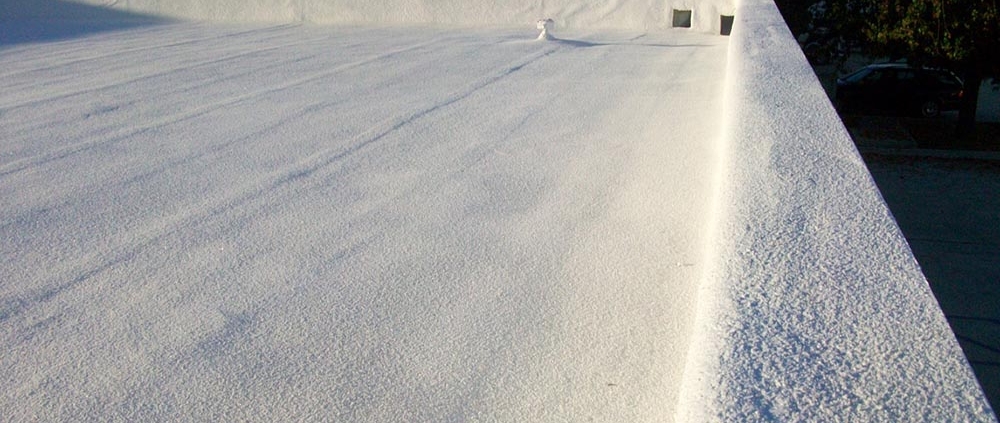The Application and Benefits of Advanced Roof Coatings for Commercial Roofs
Commercial property owners often look for cost-effective and long-lasting solutions to maintain roof integrity. Advanced roof coatings service provides both protective and performance-based benefits, extending roof life while improving building efficiency. This article explores how these coatings work, their application process, and the advantages they offer for commercial buildings.
Advanced Roof Coatings Provide Long-Term Protection for Commercial Roofs
Roof coatings create a seamless barrier over existing roofing systems, reducing damage caused by UV exposure, moisture, and temperature fluctuations. This protective layer is commonly used on flat or low-slope roofs where water pooling and surface degradation are most common. By improving resistance against environmental stressors, advanced coatings reduce the need for premature replacement.
How Roof Coatings Work
A roof coating is applied as a liquid membrane that cures into a continuous, flexible surface. It bonds directly to the roof substrate, sealing cracks, seams, and minor defects. This prevents leaks and adds weather resistance without altering the structure of the roof itself.

Common Types of Advanced Coatings
- Silicone Coatings – Known for strong UV resistance and waterproofing in areas with frequent rain.
- Acrylic Coatings – Cost-effective and reflective, ideal for warm climates.
- Polyurethane Coatings – Highly durable, suited for roofs exposed to heavy foot traffic.
- Elastomeric Coatings – Flexible and resilient, expanding and contracting with temperature shifts.
Energy Efficiency Gains from Reflective Roof Coatings
Many advanced coatings are designed to reflect sunlight and reduce heat absorption, lowering building cooling demands. For commercial properties with large flat roofs, these energy savings can be significant.
Solar Reflectance and Heat Reduction
Reflective coatings improve a roof’s solar reflectance index (SRI), minimizing heat transfer into the building. This effect lowers air conditioning usage and creates a more stable indoor climate.
Environmental Advantages
By lowering energy consumption, reflective coatings help reduce greenhouse gas emissions linked to building operations. Many systems also qualify for green building certifications or local energy efficiency programs.
Roof Coating Application Process Extends Existing Roof Life

One of the main advantages of coatings is their ability to restore existing roofing systems without the cost of full replacement. The application process is less disruptive to business operations compared to major roof construction.
Steps in the Application Process
- Inspection and Preparation – The roof surface is cleaned and inspected for structural issues.
- Repair of Defects – Small cracks, seams, and penetrations are sealed before coating.
- Primer Application – A primer may be applied to improve adhesion depending on roof type.
- Coating Installation – The liquid coating is sprayed or rolled onto the roof in multiple layers.
- Final Curing – The coating cures into a seamless, waterproof membrane.
Advantages of Roof Restoration Over Replacement
- Lower cost compared to complete tear-off and rebuild
- Minimal disruption to business operations
- Faster project timelines
- Environmentally sustainable by reducing waste
Durability and Maintenance Benefits of Roof Coatings
Advanced roof coatings offer extended durability with proper maintenance, often adding 10–20 years to a roof’s lifespan. Their flexibility and resistance to wear help commercial property owners minimize costly repairs.
Resistance to Weather and UV
The coatings protect against ultraviolet degradation, preventing brittleness and cracking. In areas with high sun exposure, silicone and acrylic coatings perform especially well.
Low Maintenance Needs
Since coatings create a smooth, seamless surface, dirt and debris accumulation is reduced. Routine inspections and minor touch-ups are usually sufficient to maintain performance.
Comparison of Roof Coating Materials
| Coating Type | Durability | Energy Efficiency | Best Use Case |
|---|---|---|---|
| Silicone | High | Moderate | Wet climates with heavy rainfall |
| Acrylic | Moderate | High | Hot, sunny regions |
| Polyurethane | Very High | Moderate | Roofs with heavy foot traffic |
| Elastomeric | High | High | Regions with temperature swings |

Conclusion
Advanced roof coatings offer commercial property owners an effective way to extend roof service life, improve energy efficiency, and avoid costly replacements. By forming a seamless, protective layer, coatings reduce leaks, resist UV damage, and contribute to more sustainable building practices.
The application process is straightforward and less disruptive than replacement, making it a practical option for businesses seeking reliable roof performance. With the right material selection and routine maintenance, roof coatings can provide long-term protection and financial savings for commercial buildings.
Visit us for professional insulation service: https://southchicagoinsulation.com/?utm_source=backlink
FAQs
How long does a roof coating last on a commercial building?
Most advanced coatings last between 10 and 20 years, depending on the material and local climate. Regular inspections and minor reapplications can extend this service life further.
Can roof coatings stop leaks?
Yes. Coatings seal minor cracks, seams, and penetrations, preventing water infiltration. Severe structural damage must be repaired before application for the coating to perform effectively.
Do roof coatings work on all commercial roof types?
Coatings are most effective on flat or low-slope roofs with single-ply membranes, metal, or built-up systems. The roof must be structurally sound before coating application.
Are reflective coatings effective in colder climates?
Yes. While their main advantage is reducing cooling loads in hot regions, reflective coatings also protect against freeze-thaw cycles by minimizing surface stress.
How does roof coating compare to replacement in terms of cost and time?
Coatings are typically faster and less expensive than full roof replacement. They minimize downtime for businesses and reduce landfill waste, making them a sustainable option.
Author: Bob Gasca attended his first spray foam training in 2007 and has continued to pursue yearly training to stay current with the latest technology and practices. He is a certified Spray Foam Master Installer through the SPFA and a member of the SPFA. Additionally, Bob serves as a Spray Foam Worldwide Ambassador, sharing information with spray foam professionals globally. Recently, he returned from a building science training, where he expanded his knowledge on how weather conditions affect home performance, helping him better diagnose and improve home health for families. Bob specializes in finding solutions to complex moisture and air infiltration issues.
Reviewer: Noah Gonzalez reviewed this article and drew on 9 years of experience to offer suggestions that make the guidance more directly useful for insulation contractors.



Leave a Reply
Want to join the discussion?Feel free to contribute!